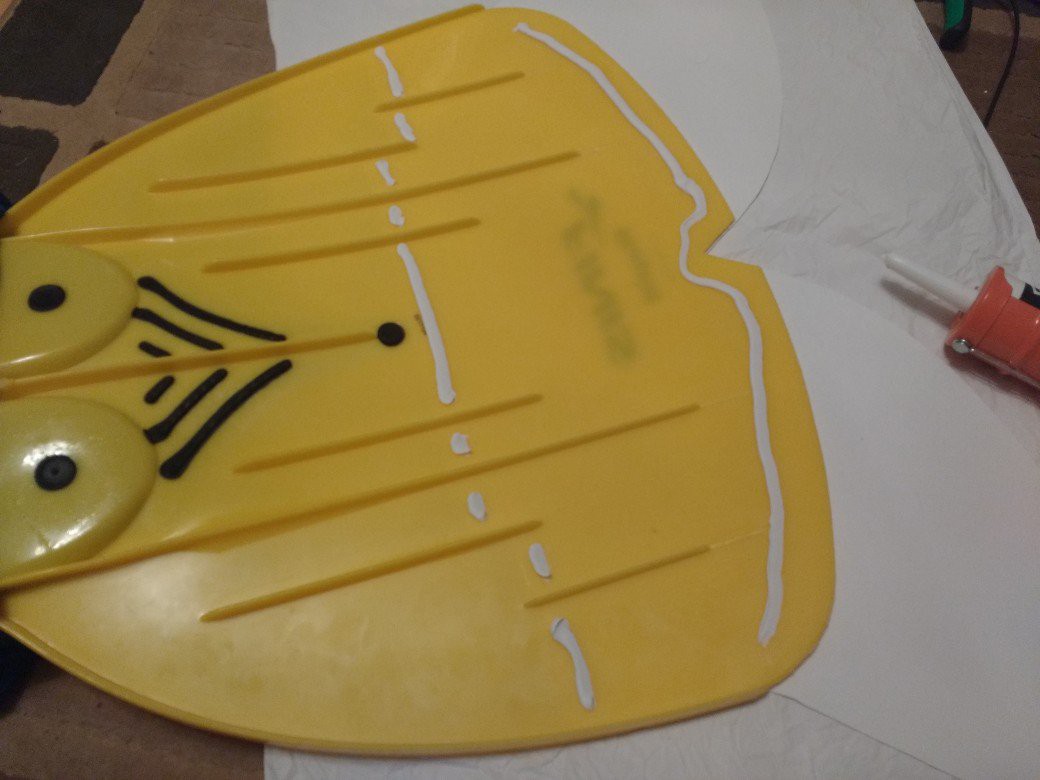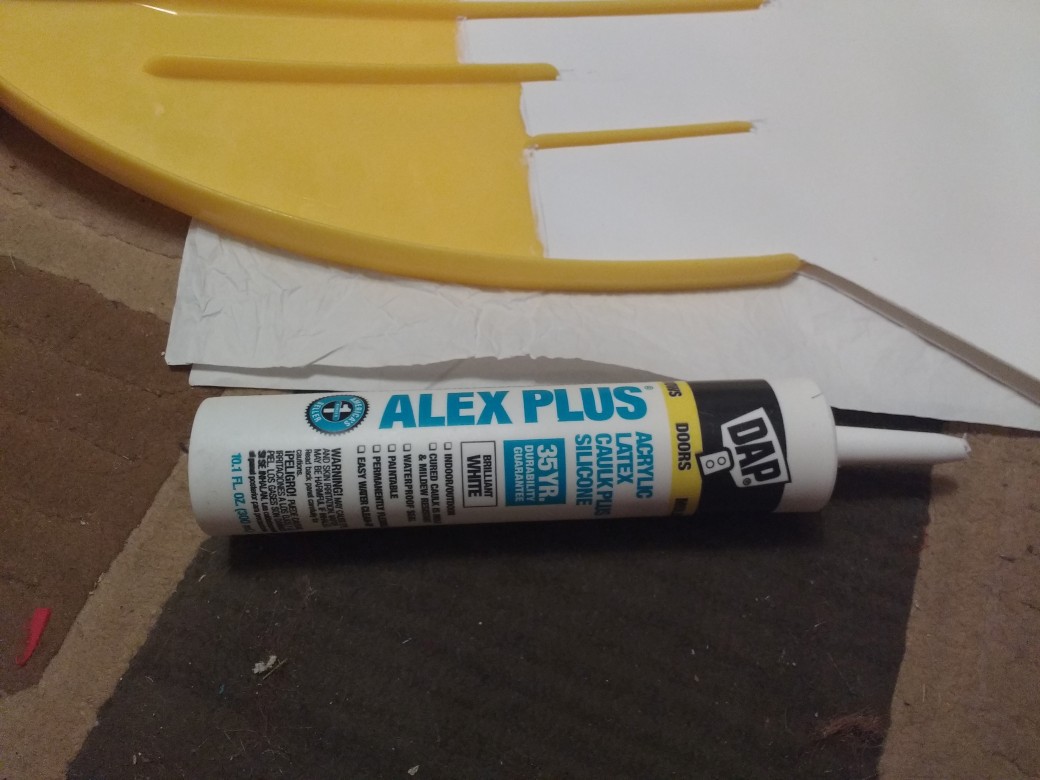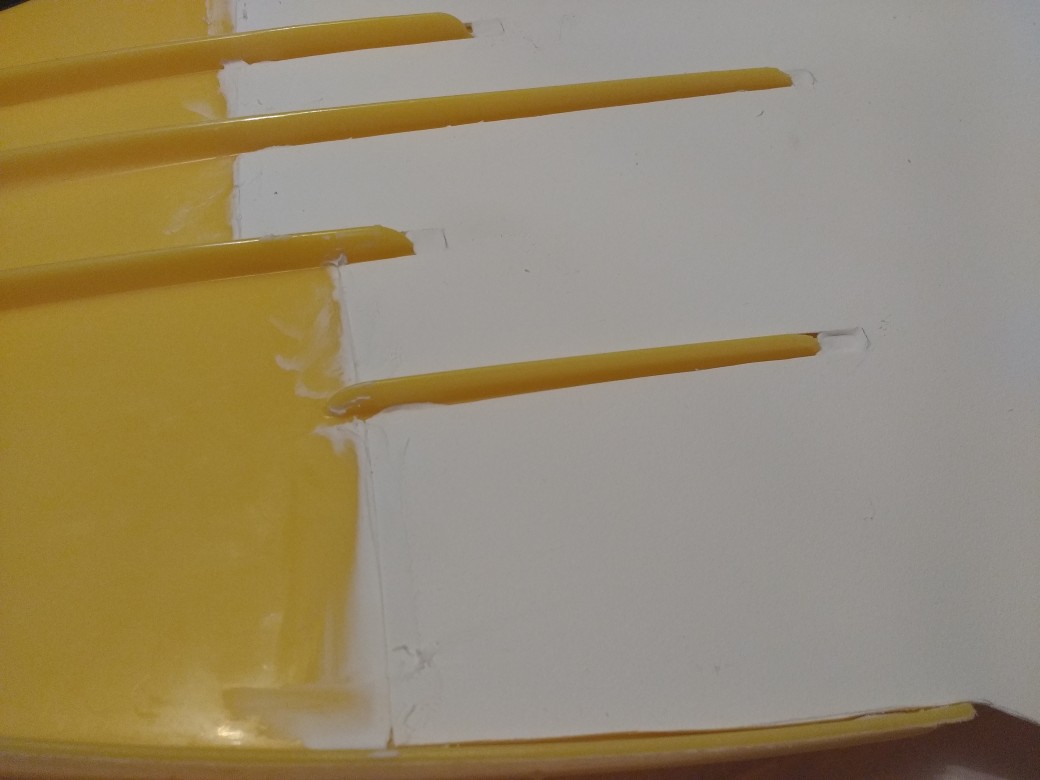That inspiration video simply used standoff bolts to screw the plastic to the monofin. As can be seen in the end, it results in a bit floppy fin, with extra lumps, along with the future rusting of the washers. Instead I wanted to glue it on.
I am not 100% sold on this pattern for the fluke, so I wanted it to also be removable. The pattern I went with, pulls in, and then past the edge of the original monofin, fans out again. This was done because the monofin has an edge made for rigidity, which I did not want to remove. I did some swimming with the monofin unmodified, and the extra power is amazing, which I did not want to lose by making it more flexible. My fear was that by cutting part of the edge off, I would reduce this. So I'll try with this pattern, and if I don't like it, I can modify again later.
To do this, I hit upon the idea of using caulking as an adhesive. I started with some silicone/latex blend that I had around:


It was easy to lay down a bead, and press the parts together, as well as to smooth the transition edges:

Once I got this all on, and dry, I remembered a problem with caulk that would make this approach fail. Caulk cures using humidity in the air. This means that while the transition caulking would cure fine, the bead I layed down between the plastic and the fin would never cure. And sure enough, a day later, I pulled the plastic off, and it was still uncured.
Time for a different approach.
 Quinn
Quinn
Discussions
Become a Hackaday.io Member
Create an account to leave a comment. Already have an account? Log In.